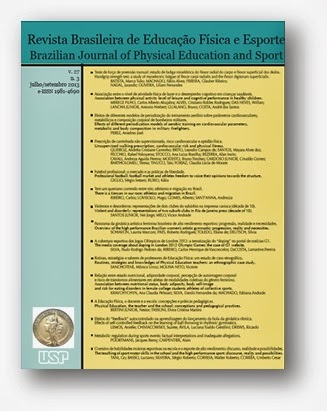Effects of different periodization models of aerobic training on cardiovascular parameters, metabolic and body composition in military firefighters
DOI:
https://doi.org/10.1590/S1807-55092013000300004Keywords:
Physical preparation, Periodization, Heart rate, Cardiovascular health, Bradycardia, Physiological adaptationAbstract
The aim of the present study was to analyze the effect of different periodization models of aerobic training on cardiovascular and metabolic parameters, and body composition. Sixty-five military firefighters y / ES (25.9 ± 0.6 years) were divide into four groups: control (GCON, n = 15) without treatment; undulating (Gu, n = 18), scaled (Gs, n = 17) and increasing (Gi, n = 15); they trained during 13 weeks, three weekly sessions of 30 minutes at intensities of 60% to 90% HRmax. Heart rate (HR) was monitored in all sessions . Anthropometric measurements and cardiopulmonary exercise testing (Aerosport TEEM-100) were conducted before and after the experimental program. A reduction in body fat percentage, bradycardia at rest and submaximal HR with increased oxygen consumption, and reduction of RPP, in DBP at rest for all three groups trained without advantages for Gi, were observed. These results suggest that training programs which includes increasing and/or undulating aerobic training models may be more suitable for non-athletes.Downloads
Download data is not yet available.
Downloads
Published
2013-09-01
Issue
Section
Biodinâmica
License
Todo o conteúdo da revista, exceto onde está identificado, está licenciado sob uma Licença Creative Commons (CC-BY)
How to Cite
Perez, A. J. (2013). Effects of different periodization models of aerobic training on cardiovascular parameters, metabolic and body composition in military firefighters . Brazilian Journal of Physical Education and Sport, 27(3), 363-376. https://doi.org/10.1590/S1807-55092013000300004


